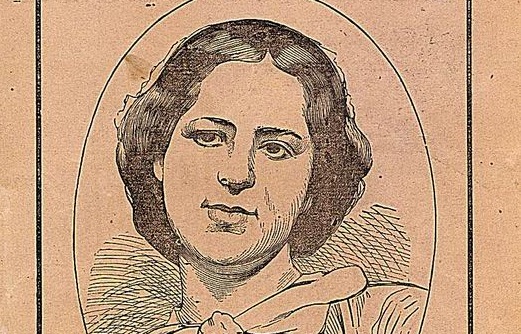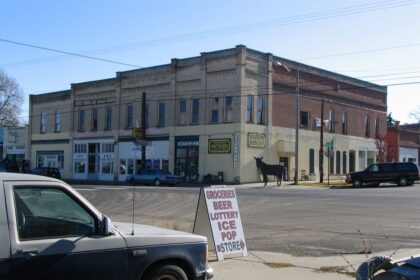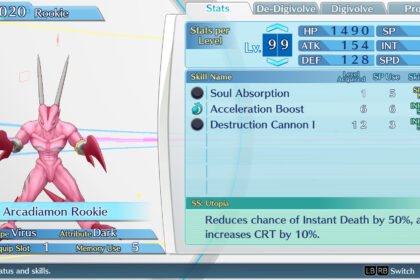Elizabeth Lloyd King was the alleged murderer of Charles Goodrich, who she is said to have shot 3 times in the head on March 20, 1873, in Brooklyn, New York, United States. Her inquest drew massive crowds and the murder was headline news in the city until her capture. Her inquest was held on the same day and at the same court as Mary Ann Dwyer, who murdered her three kids, making the story even more sensational for the media. Take a look below for 25 more terrifying and bizarre facts about Elizabeth Lloyd King.
1. King was described as a remarkable woman, who was attractive and intelligent. She was also a very good musicians. The New York Times wrote the following about her, “When she was eighteen, she commenced to go to school again; she studied very hard, graduated at the head of her class of fourteen or fifteen girls.
2. She was born in Plymouth, Massachusetts to Isaac B. King and Harriet A. King. She also had an older sister.
3. She had a normal childhood. However, after puberty, she grew more and more unnatural and strange. While she did well in school, she would often leave and come back whenever she felt like.
4. On April 25, 1867, a probate court in Boston committed her to the Taunton Lunatic Asylum, during which time she was also known as Alice Howard.
5. At Taunton Lunatic Asylum, her attending physician was Norton Folsom, who indicated that the, “form of her disease was mania, which was manifested by excitement, irascibility, incoherence of speech and violent conduct, and that her condition was, “caused by some disease peculiar to females.”
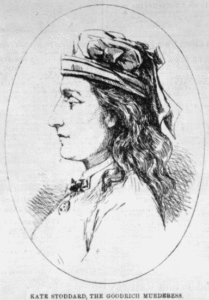
6. She was discharged from Taunt Lunatic Asylum on September 10, 1867, and worked as a milliner and teacher in New York City, Philadelphia and Hartford.
7. King met Charles Goodrich when she responded to a personal ad in a newspaper, identifying herself to him as Kate Stoddard. Soon after meeting, they got into a serious relationship. In a letter to Goodrich from early 1872, King refers to him as, “my dear Charlie.”
8. The letters sent between King and Goodrich indicate that the two had married on May 20, 1872, after which her letters to him are addressed, “my dearest husband.”
9. Goodrich eventually sent a letter to King stating that it’s better for both of them if they would separate. However, King refused to even consider it.
10. When Goodrich tried to end their marriage and evict King from his home, King shot him in the head 3 times. She then dragged his body near the fireplace grate, and cleaned off the blood.
11. At first, the police thought that Goodrich had committed suicide. However, the post mortem investigation found that he had been shot three times as there was three bullets in the brain.
12. Soon after the murder, William Goodrich, Charles’ brother, offered a $2,500 reward for the capture of the woman who had killed his brother. On July 2, 1873, the Brooklyn Common Council unanimously adopted the motion to offer another $1,000 for the capture of King.
13. According to the New York Times, King had been the primary suspect from the very beginning of the investigation.
14. On July 8, 1873, Mary Handley, King’s old roommate noticed King exiting the gates at the ferry dock. She alerted a nearby officer, who took both Handley and King to the Second Precinct Station of the Brooklyn Police.
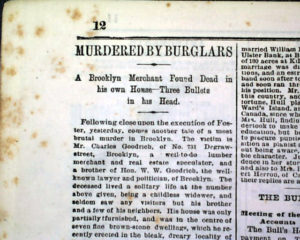
15. Her identity was incontrovertibly confirmed by July 11, 1873, and King confessed to being Kate Stoddard and to the murder of Goodrich.
16. King also admitted that she been hiding at the home of the widow Ann Taylor. Taylor’s daughter, Anna Knight, would later testify that King did stay with her mother while using the alias Minnie Waltham.
17. When the police searched King’s room at the Taylor home, they found 2 trunks, one of which had a watch, a pocket book, a revolver, a ring and two seals, all of which belonged to Goodrich.
18. When she was arrested, she went back to using her real name, Lizzie Lloyd King, and she became very interested in news about herself. She often demanded the day’s papers while in jail.
19. After being found guilty, she was sent to the county jail at Raymond Street. Three prisoners were assigned to keep constant watch over her to prevent a suicide attempt. They were, Fanny Hyde, Mrs. Burgess and Mrs. Simmons.
20. While in jail, it was said that she pretended to be very religious, often reading the Bible and Episcopal prayer books.
21. On July 21, 1874, she was committed to the State Lunatic Asylum in Auburn, New York, due to Dr. Charles Corey who stated that she wasn’t fit to stay in the county jail.
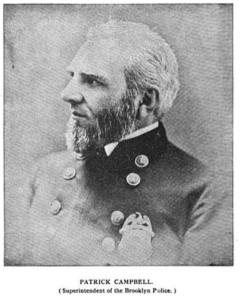
22. In the asylum, King continued to read stories about herself, even sending complaint letters to the newspapers about any inaccuracies she found.
23. In a 1906 interview with the Brooklyn Daily Standard Union, the previous chief of the Brooklyn police from 1870 until 1895 said that the Kate Stoddard case was a great one.
24. In the book Women Who Kill, Ann Jones argues that women like Lizzie Lloyd King, who are subjugated from childhood and then abandoned by their mates, are capable of engaging in crimes they would not otherwise commit to prevent their own destitution.
25. King often criticized New York’s lunacy law which states that those indicted for a crime, but not convicted, be sent to an insane asylum She considered this an ex post facto law.

